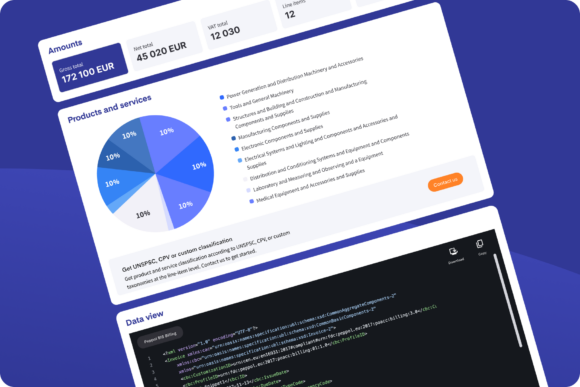
Big data is a hot topic for good reason. Data collection and analytics are set to be one of the biggest collective tech investments of this era, with a projected market value of $103 billion set for 2023. Information is worth a lot to businesses, whether it’s on a large scale, for instance, to recognize patterns and trends and learning algorithms, or on a micro-scale to identify, for example, deviations and errors, or automate repetitive detailed tasks. The information helps them tailor their services and operations towards better customer experiences and better competitiveness.
However, one issue with data is the presence of poor-quality data. Not all information will be useful to you, naturally, but if the data you trust is incorrect — or structured in a way that’s not possible for machines to process — it can be outright harmful. Data cleansing is a process used by organizations to weed out all outdated, inaccurate, inconsistent, or unnecessary data. Its importance for finance teams can’t be understated. Incorrect handling and incorrect source data in finance and accounting processes can have significant consequences for your business.
Read on to learn more about data cleansing, how it works, best practices, and more.
The problem with poor-quality data
It turns out that data of the unstructured variety is causing the most problems. This type of information comes in a “raw” form, such as image files like PDFs, audio, emails, sensor readings from IoT devices, and various other sources.
Unstructured data is much more difficult to work with without human handling, meaning that automation solutions can often struggle when working with it. And remember — it’s human to error, which just adds to the risk when people need to interpret and enter unstructured information into various systems. In accounting, the costs can be significant. We found, as an example, that 30% of the cost of accounts payable was lost due to errors.
And despite the direct costs, the indirect costs can be vast as well — inaccurate information is rather useless to base your decisions upon. A whopping 95% of businesses report that managing unstructured data is a problem according to Forbes. And considering that the vast majority of data used by companies is unstructured, we can easily see a problem arising.
Why you should consider data quality
The process of data cleansing for improved quality is the practice of converting your data into a form that’s machine-readable and useful to your business. This way, you can properly streamline internal operations, automate, and generate useful analytics and actionable insights from it. Healthy data has a variety of benefits:
- Building trust: Receiving the wrong information in an email with an attached invoice is hardly a positive experience for anybody, whether it’s the finance or support team or the customer. Getting everything right with accurate information means trust among the people you work with.
- Customer communication: Ever sent out emails to your customers thanking them for recent purchases or repeated business? The data in those emails must be correct so that the buyers feel safe doing business with you.
- Improved focus: Instead of spending time fixing data entry errors or weeding out duplicate data, employees can focus on more important aspects of running the business. Clean data ultimately leads to more efficiency and greater revenues.
The result of these efforts is ultimately a competitive advantage against other businesses as it can help you improve processes, make them more efficient with better automation, and be more accurate with a reduced risk of errors that can hurt both the trust in your brand and your bottom line.
Tips and best practices for data cleansing in finance and accounting
Whether you work in finance, IT, or any other department, improving data quality should be a priority for you. If you’ve read our Automation for CFOs ebook, you’ll know that CFOs constantly should keep their records clean and tidy to maintain positive business relationships. To that end, some ways to get started include:
- Optimizing the way you work with data: Prevent errors from popping up initially by standardizing data entry processes and using tools to automatically search for discrepancies, such as deviant invoices.
- Having predefined structures: For instance, have a consistent structure for everything from naming conventions to formats such as the messaging standards in Peppol, to be used across the business. The earlier you set these in stone, the easier it will be in the future.
- Removing duplicate data: Duplicate information can mess up your analytics and cause you to waste time when working with it. Duplicates in your master data can have unexpected, but significant, consequences. Scrub through your data regularly for duplicate entries to save you on data maintenance or adopt tools that keep your registers tidy automatically.
- Knowing what to keep and what to get rid of: What happens when data points are missing or if there are unwanted outliers in the collected information? Have a plan for handling missing entries and removing unwanted ones too. For example, in accounts payable processes, you want deviations to be managed as automatically as possible and don’t waste time on data errors that your organization wasn’t responsible for.
- Getting everyone involved: If you want to clean up your data and keep it that way, communicate with your team early on about your intentions and find ways to standardize the workflow. Building cleansing into your corporate culture, and adopting tools that focus on data quality, is an excellent approach to keeping the benefits going.
Using automation in finance to your advantage
Working with data is time-consuming and prone to human error. As companies move to more standardized processes and data cleansing practices, one of the best ways to ensure consistency and completeness in your data is to use digital-first solutions, standardized transaction formats such as e-invoices, and automation.
Find out more about the role of data management in finance, as well as other related topics in our new ebook “Automation for CFOs”.



